God gave us our memories so that we might have roses in December.
J.M. Barrie
Pierre de Ronsard, St. Cecilia, Baron Girod de l’Ain, Septer’d Isle…these are some of the roses that grow both literally and figuratively in Risa Hirose’s garden. The beauty of the flowers is matched by the beauty of their names and Hirose finds her inspiration in them. Rose is also a play on her name and that is often reflected in the titles of her pieces such as in her print Hi rose-essence- shown above. In her second and final year in the Master’s program at Tokyo Zokei Univeristy, Ms. Hirose’s wood engravings have already won numerous competitions and she has held solo exhibitions and been selected for the CWAJ Print Show for the past two years.
Wood engraving is a type of relief printmaking in which an image is cut away, leaving a raised surface on which the ink is applied and then transferred to paper. Traditional wood blocks are carved with the grain of the wood and the prints often display or even feature the grain as a part of the artist’s vision. On the other hand, wood engraving uses wood cut across the grain of the wood – like a slice of tree trunk. The prints tend to be small, as they are limited by the size of the trunk or branch (about 15cm in diameter), as in the example below.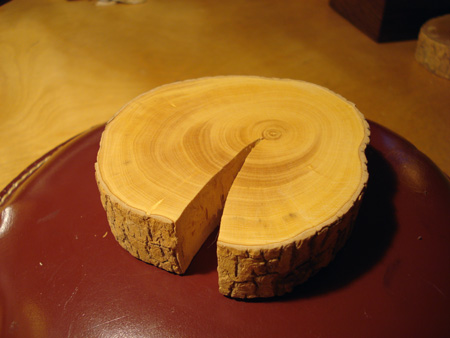
Hirose uses the traditional tsuge (boxwood) for her blocks, which is very hard, very slow-growing and perfect for carving incredibly fine detail. Her small works are often single images in the round, using the shape of the block as the outermost border, such as in Passion ToKei, her first print to be exhibited at the 2009 CWAJ Print Show. Look very closely at the image below – it is not a print – it is actually the carved block used to make the print. Her technical mastery is amazing.
To get the meticulous detail she is known for, Hirose hand prints the blocks onto super fine translucent gampi paper. Thicker paper would not yield such detail. After drying, each one is carefully trimmed and attached with a natural based glue to heavier paper. Here is the artist herself, standing in front of drying gampi paper impressions of one of her newest works Things That Day. This new print is a memory of her trip to Okinawa and adds bougainvillea and coral to her repertoire.
To make a large wood engraving, an artist will align a group of blocks like a parquet floor, one square next to another. This is not the system Hirose uses. She uses (and re-uses) her blocks like modular components, placing them in her compositions. Unlike most traditional wood block prints, where uniformity is prized, each one of hers is different as placement cannot be exact. The large work below, Diary-pale,moisture-, is 110cm x 75cm, an unfeasible size for a regular wood engraving. Her collage-like approach and use of empty space is one of the thing that makes Hirose’s prints unusual.
In another large print, Document 1-one prior fragment-, shown below, you can see some of the components repeated from the print above. You can also see certain images repeated within the print, for example the hyacinth bulb, the small rosebuds and daisies.
Hirose’s artistic themes revolve around the idea of “sealing down time”, yet ironically, the prints themselves contain an impermanent and changeable material. After glueing each small print to the larger paper, she crushes rose petals directly on each piece, creating a wash of soft pigment. The color starts out as a rich purple and fades over time to a champagne-like color. In each step of her work she layers on the small differences giving each print in the edition a unique quality. Below is a close-up of the center of Document 1-one prior fragment- when it was originally created a few months ago.
Here it is faded as it currently appears now. I think it is amazing to watch a normally static art form develop and mature over time.
Risa Hirose will have a print at the upcoming annual exhibition of the Daigaku Hanga Gakkai (Committee of Universities of Art for Print Studies in Japan) held at Machida City Museum of Graphic Arts from December 5-19, 2010, along with other print work by more than 280 students. There will small prints by the students available for sale – some for only 1000yen each.
And her new day job when she graduates this spring? Ms. Hirose will be an engraver at the Japanese Mint. So each time you hold a fresh yen bill, you too can have your own Risa Hirose engraving.
N.B. I am a little frustrated with this post as none of the photos begin to show the elusive quality of her work, or even the absolute excellence of her technique. I guess it is simply a limitation of the medium.
All images copyrighted by Risa Hirose. Please do not re-post without writing to me for permission. Thank you.

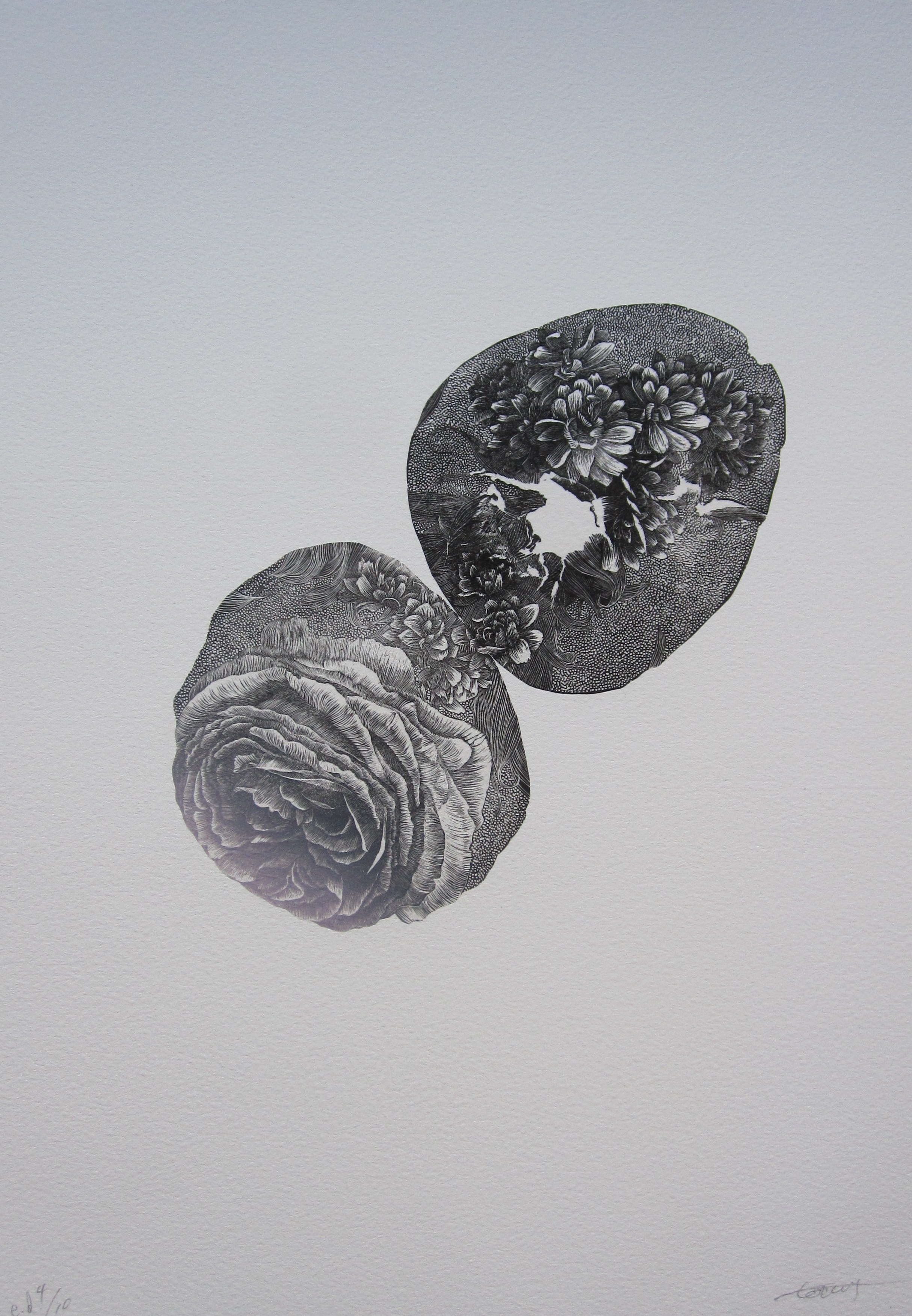
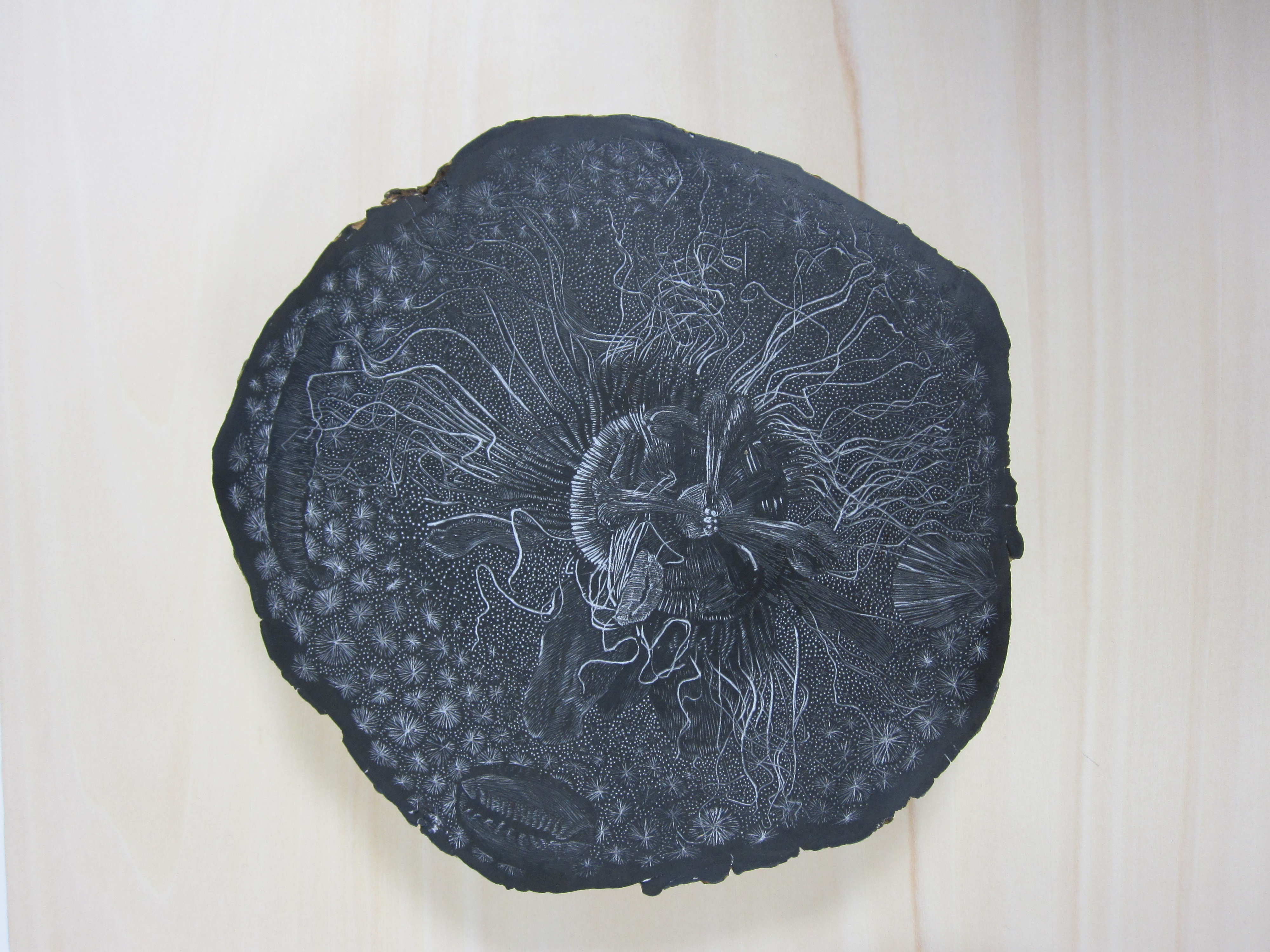


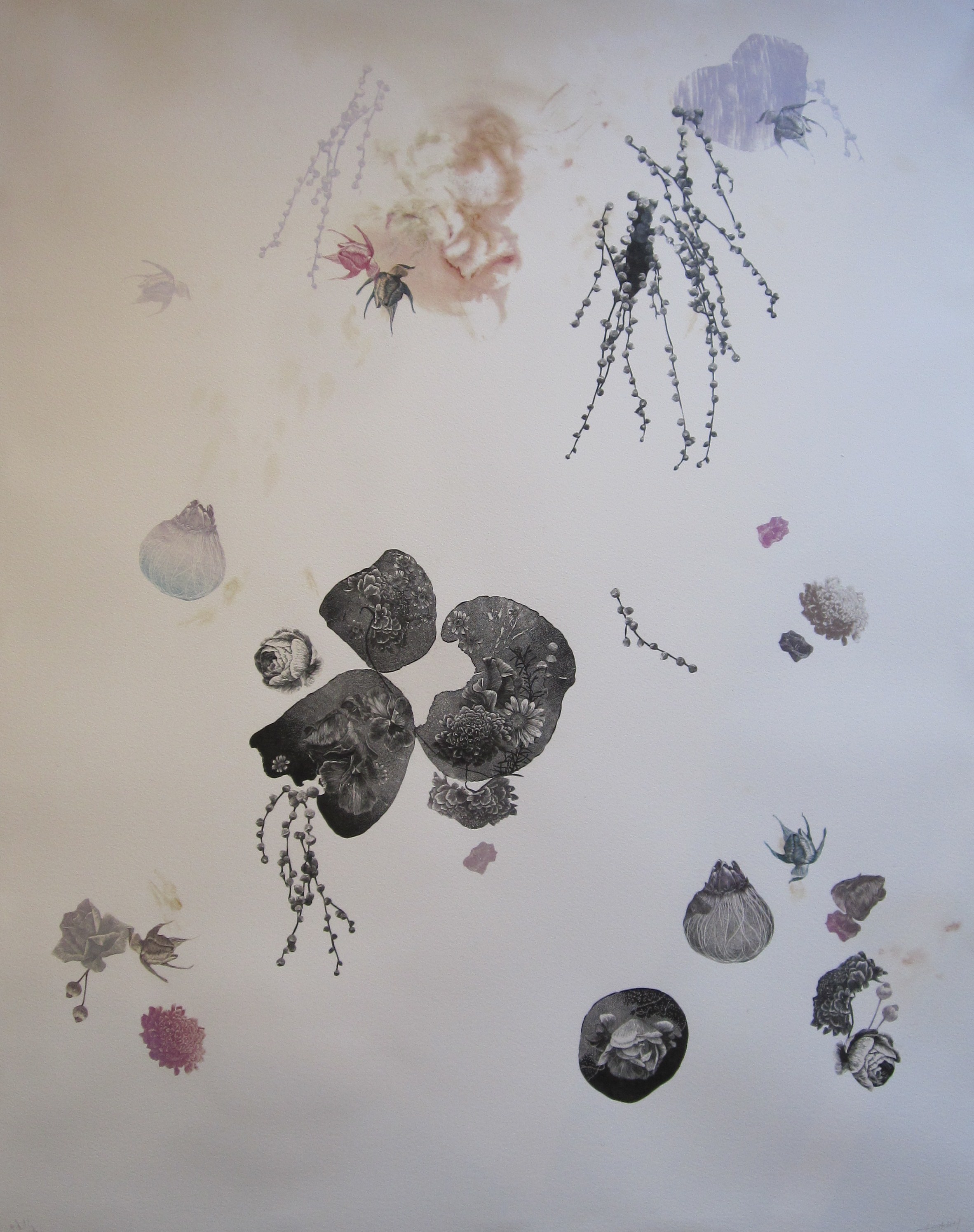
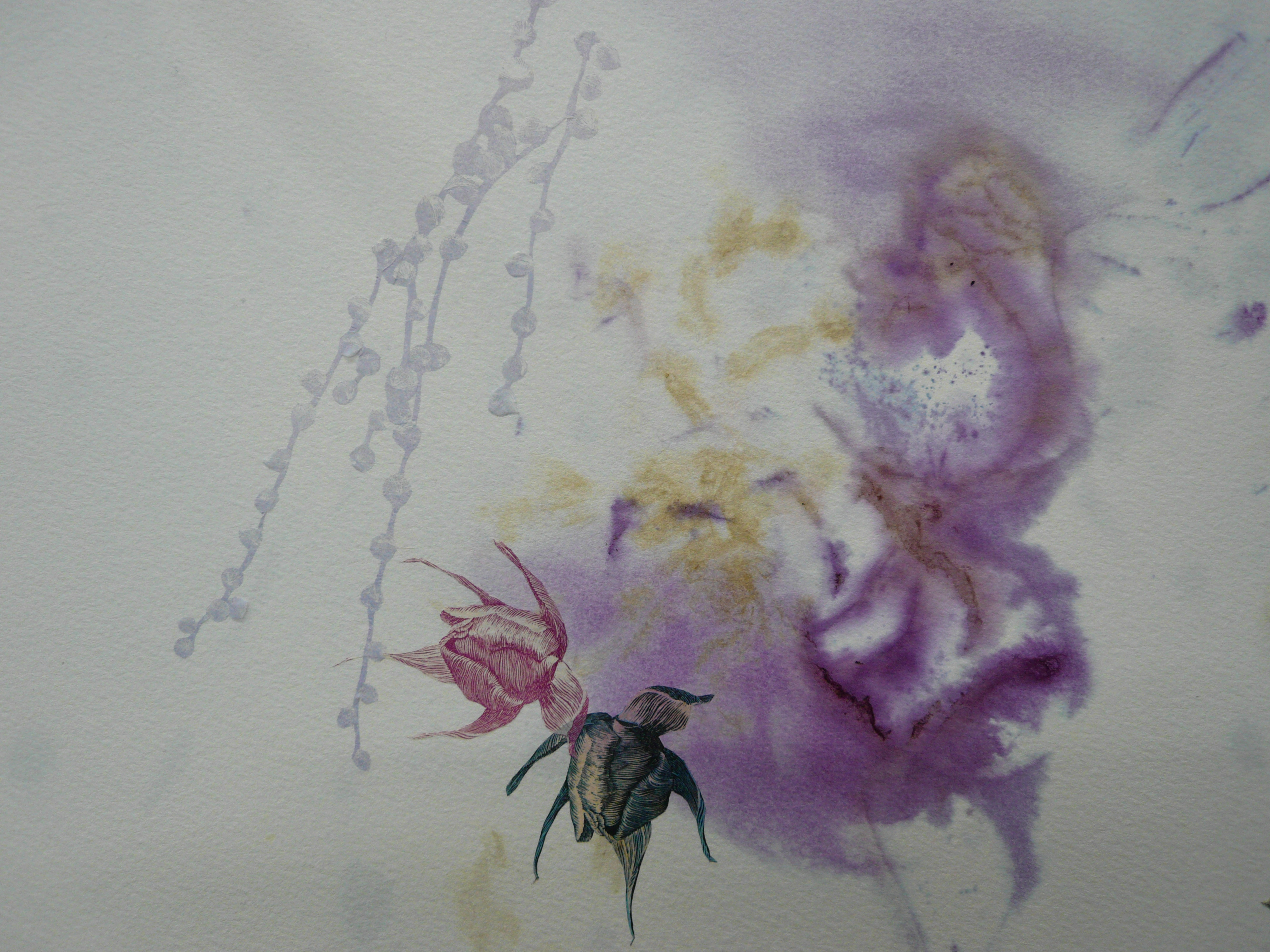
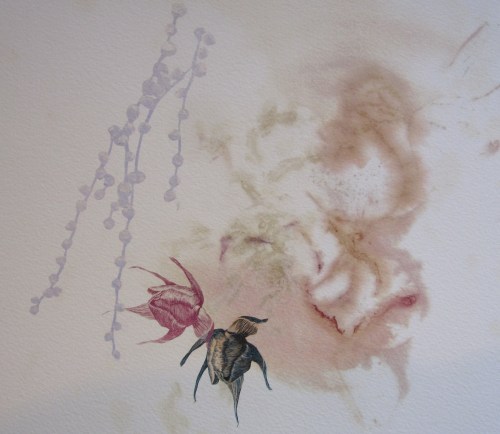
The fading fascinates me. Does she sell the work before it has faded, therefore requiring her to explain the process to buyers? Or does she only exhibit a few months after the last piece of her installation is finished?
She sells it at any point, so their can be some faith needed on the part of the purchaser. I kind of like the adventure in that…